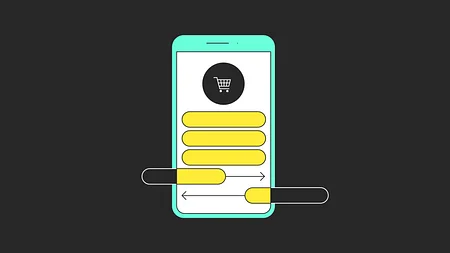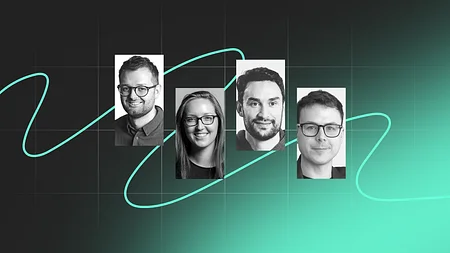The future of fintech is new business models

How cool would it be if you could subscribe to getting more wealth?
The latest wave of mobile wealth services like Robinhood and Acorns have turned the market upside down. Last time I spoke about how the mobile-first wealth platforms have nearly as many users as the entire Robo-Advisor market. This time, if you’re not innovating on the business model, you’re not really innovating…
The Good Old Business Model
I think it’s game over for the old wealth business model (at least if your goal is growth).
The conventional wisdom for how wealth and robo works is fairly simple. Your goal is to build the AUM (Assets Under Management) and charge fees. If you’ve signed up to a robo-advisor it goes something like this:
- Give some basic personal info (age etc.)
- Answer some questions about your appetite to risk
- You land in a bucket between 1 and 10 (1 being lowest risk, 10 being highest)
- You see some charts about how the investments you’ve selected might grow if you contribute $X over the following Y years.
- You set up an autopay / direct debit and you forget about the thing until you do your taxes (or if you’re in the UK until you wonder how that fund is doing)
You pay in on a monthly basis and pay something like 0.2% to 0.4% annually (of your total account balance) to the wealth manager or robo-advisor. Of course, what you don’t see is the fees being paid by the wealth manager to the asset manager, or that the asset manager passed on from the exchange. There’s a whole world of little fees happening behind the scenes that you never see, you lose out, and the worst part is you’ll probably never know.
They just want it to be good and to not think about it too much
When you charge on a percentage of growth, your business model becomes about scale. The more scale you get, the higher your revenue. The problem, as discussed last time, is people aren’t entering the wealth market. So wealth managers are chasing an ageing population who may not pass on all of their assets to one family member. The business model starts to break, and something needs to be done to bring people in at the bottom end of the market.
Customers Don’t Like Percentages
APR is a great way to make money, but not to communicate. Percentages of less than 1 are even worse. They may be a great way to make money, but there’s an opportunity to differentiate and acquire new customers by changing that model.
People tend not to be aware of where they will be in 30 years, most don’t know what they want for lunch never mind what income they want when they retire. Ultimately they just want it to be good and to not think about it too much.
So the big risk appetite game played by most robo platforms doesn’t make sense. Sure, there are power users out there who love that stuff, but the numbers prove that’s not where the future is.
What you see in mainstream consumer culture is something quite different.
Your Customer Loves a Subscription or a Flat Fee
Spotify, Netflix and even Uber have really innovated on pricing models. Changing your pricing model is the key to acquiring customers, especially if your acquisition route isn’t to bring in significant AUM and charge a percentage.
Changing your pricing model also changes the scope of what your proposition can do. Acorns, for instance, charges a flat fee to round up your everyday debit card spending and help you invest that. It’s just there, being useful for $1 a month. It seems so valuable for ¼ the cost of a coffee.
If you don’t have 100 customers who absolutely love your product, you don’t have a product
When you reorient, and surprise and delight, around seemingly giving so much usefulness for so cheap, you move from 'scary 30 year plan' decision to 'no-brainer' decision.
Innovation isn’t about the Channel, it’s Core Strength
In the age of digital, we’re seeing people bring in shiny web frontends for robo-advisors over existing vendor solutions for wealth. Much like putting an old engine in a new car, underneath the shiny exterior you’re still constrained by what the engine can do. Wealth engines were built for wealth managers. Those core systems and platforms weren’t built to enable new product capability and they bake in some fixed costs.
By building their own technologies, modern mobile-only wealth platforms are changing the game, the pricing and cost model.
Growing Users as the new Key Result
If you get eyes on the product then the revenue will (usually) follow. Yet in the world of financial services, we’ve completely bastardised the “Minimum Viable Product” concept. To the world of FS, “viable” means the first version we launch that’s feature complete for customers and has all of the integrations into existing systems.
If you don’t have 100 customers who absolutely LOVE your product, you don’t have a product.
Once you have that product that customers love, then and only then can you start to think about how it scales. When customers love the product that becomes so much easier. You deliver far fewer features and customisation and the product starts to sell itself.
Clients asking for customisation is a sign the core of your product is broken. This is why we talk about Minimum Loveable Product.
You can see this in the mobile-first wealth plays better than anywhere. Users are flocking to them because they have a business model that allows them to fit into everyday life in a useful way.
Next time: just what is the product approach that allows you to hack everyday spend, and change the business model?
Want to learn how to create a service that does all of these things? Get in touch below.



